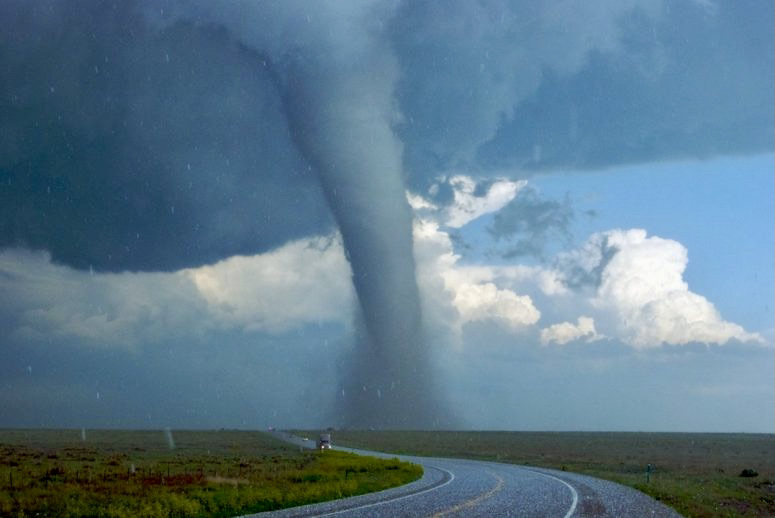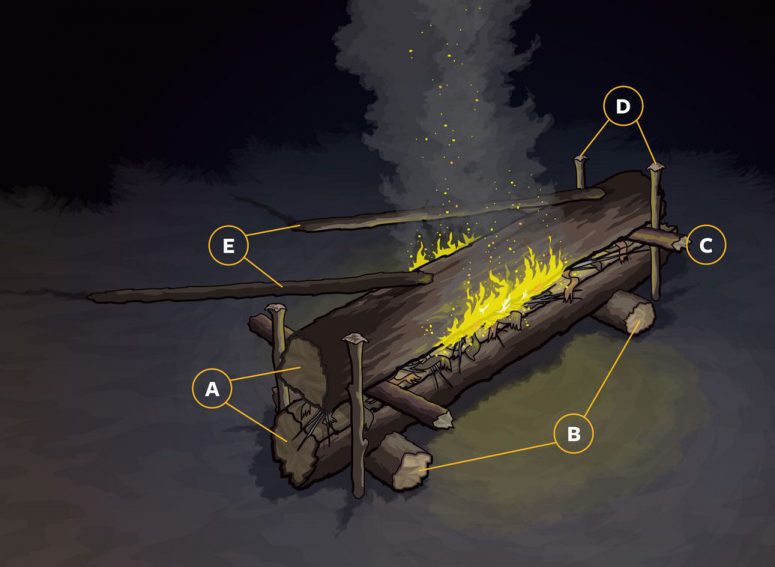
An Oklahoma tornado courtesy of Shutterstock
Before moving to Georgia in my adolescence, I lived in Stillwater, Oklahoma for the first 12 years of my childhood. It was a wonderful place to grow up as a boy.
There were flat streets for my brother and I to skateboard all around town, lots of arcades for us and our friends to dump quarters into, and fishing at Theta Pond. Oh, and chili cheese dogs on Washington Street.
But there was also a harrowing threat of living in Oklahoma, especially in the summer. That’s because the state is home to more tornadoes than any other place in the world—right smack in the middle of Tornado Alley. And I distinctly remember many close encounters with them, if not once every other summer.
My first memory of a tornado was watching a slow and calming funnel cloud form directly over my house on Admiral Street. It was this giant, swirling, but graceful thing that looked like it could explode into a tornado at any moment. My family and I all watched from the front street. No one said it, but I’m sure all of us we’re thinking: “Please don’t touch down. Please.” We didn’t run because it wasn’t violent looking, and the sirens hadn’t gone off yet. In other words, when you live in Oklahoma, you learn to live with the threat of tornadoes every summer. And you don’t scramble for cover or storm shelters until you can feel, observe, and hear that something violent is about to happen. Continue reading…

This is a great and handy read from T. Edward Nickens: “Everyone’s watching, so don’t screw it up. Soak a roll of toilet paper in kerosene and tuck it at the base of the tepee fire. You don’t have to light it with a flaming arrow shot across the dark sky. But, then again, you could.”
 This week many world and local leaders hit the nuclear response button to a pervasive, flu-like virus that kills a lot of old people and around 10 times the number as the common flu, according to the latest figures.
This week many world and local leaders hit the nuclear response button to a pervasive, flu-like virus that kills a lot of old people and around 10 times the number as the common flu, according to the latest figures.
Dubbed “the coronavirus” (covid-19 to be scientific), roughly 92% of all infected age groups survive and fully recover. For those under 60, the survival rate jumps to over 99%. For those in their 70s and 80s, or those with respiratory or smoking conditions, the survival rate drops to 96% and 92% respectively. For comparison, the flu kills .1% of those infected on average.
Understandably, those “much higher than normal odds” are a scary concern for senior citizens like my parents who venture out in public. But depending on how optimistic you are, a 92-99.5% survival rate doesn’t warrant shutting down society for, as one megacity in China has done and the entire countries of Italy, France, Spain (and surely more) have already done.
In my opinion, those reactions are the nuclear option. A “flattening the curve” of infections at all costs option. In America, we’ve so far taken a hybrid approach, which is still an overreaction, in my risk-taking opinion. Although citizens are free to move about and go to a decreasing number of open stores (because there isn’t enough foot traffic to keep them all open), every public event, many businesses, most churches, and an increasing number of schools are closed to meetings.
To make matters worse, public officials haven’t explained an endgame or exit strategy for the first wave of 15-30 day closures. Because they don’t have one. This only causes more panic and uncertainty. Continue reading…



 This week many world and local leaders hit the nuclear response button to a pervasive, flu-like virus that kills a lot of old people and around 10 times the number as the common flu, according to the latest figures.
This week many world and local leaders hit the nuclear response button to a pervasive, flu-like virus that kills a lot of old people and around 10 times the number as the common flu, according to the latest figures.